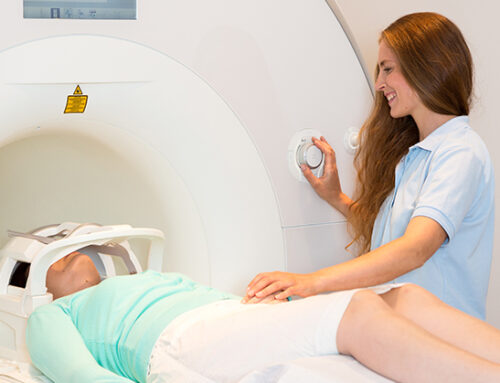Reducing thick, sticky plaques made up of amyloid-beta proteins in the brains of Alzheimer’s patients has been the focus of scientists for decades. And yet, they have almost nothing to show for it– removing those plaques doesn’t cure Alzheimer’s disease.
A new study suggests a reason why and, if true, will usher in a completely new way of treating not just Alzheimer’s disease but also Parkinson’s disease.
For more than 100 years the conventional wisdom has been that Alzheimer’s is caused by a buildup of amyloid-beta plaques in the brain. This belief has remained despite the fact that no drug which lowered these plaques has been able to dramatically slow the progression of the disease, much less cure it.
This failure led Alberto Espay, professor of neurology at the University of Cincinnati (UC) and lead author of the new study, to say, “We’ve run into a dogma. And it is very hard to test new ideas when the overarching theme of funding is centered on the idea that removing amyloid must be the only way to go.”
Professor Espay and his colleagues point to the fact that sizable numbers of people with a buildup of amyloid plaques have razor sharp memories. For instance, half of centenarians with no history of cognitive abnormalities have autopsy-confirmed Alzheimer’s pathology. In other words, their brains are riddled with amyloid-beta plaque!
How can this be?
Professor Espay and his research team believe plaques are simply a symptom of some other process happening in the brain. And they think they know what it is…
Soluble Amyloid Is The Key Factor
The amyloid protein in its normal healthy state is water soluble and has many important functions in the brain. But, if the brain is attacked by a virus, toxin, nanoparticle, or if some biological or genetic process takes hold, the protein can mutate and transform into solid plaques. When this occurs, it causes healthy amyloid levels to shrink.
The UC team believe this reduction of healthy amyloid is the real culprit behind the disease.
This is backed up by clinical trials in which patients with reduced levels of soluble amyloid show worsening clinical outcomes.
“I think this is probably the best proof that reducing the level of the soluble form of the protein can be toxic,” said Andrea Sturchio, another member of the UC team. “When done, patients have gotten worse.”
This finding is also backed up by the team’s own previous research which discovered people with high levels of soluble amyloid had normal cognitive function whereas those with low levels had a greater likelihood of cognitive impairment.
For their new research, published in the Journal of Alzheimer’s Disease in September, they analyzed the amyloid levels in patients with mutations that predict an overexpression of amyloid plaques in the brain. Under orthodox thinking this should make them more likely to develop Alzheimer’s. Let’s see if this was the case.
What Is Lost Is More Important Than What Is Gained
The research team found that so long as levels of soluble amyloid stayed above a certain minimum threshold, the participants remained cognitively normal during the three-year follow up regardless of the number of amyloid plaques accumulating in the brain.
Professor Espay put it this way: “It’s only too logical, if you are detached from the biases that we’ve created for too long, that a neurodegenerative process is caused by something we lose, amyloid-beta, rather than something we gain, amyloid plaques. Degeneration is a process of loss, and what we lose turns out to be much more important.”
He suggests this theory could apply across other neurodegenerative diseases and improve our ability to treat them.
For example, in Parkinson’s disease, a normal soluble protein in the brain called alpha-synuclein can harden into a deposit called a Lewy body. Rather than Parkinson’s being caused by Lewy bodies aggregating in the brain, it’s more likely to be caused by decreasing levels of normal, soluble alpha-synuclein.
The question remains as to why some people, such as the centenarians previously referred to, can keep generating soluble amyloid even with the growth of plaques while others aren’t able to. The process by which healthy amyloid turns into plaques is not understood either, but Professor Espay is optimistic, and hopes in the future there’ll be two approaches to treating neurodegenerative diseases.
Rescue Medicine Vs. Precision Medicine
The UC group is next going to study if increasing the levels of soluble amyloid-beta in the brain leads to a better outcome for Alzheimer’s patients. This is what he calls the rescue medicine approach.
The second approach is precision medicine. This approach attempts to find the root cause of degenerative diseases such as Alzheimer’s disease. It delves deeper to find the mechanism by which soluble amyloid becomes depleted. If this can be understood, then it will be possible to prevent it transforming into plaques and prevent Alzheimers disease altogether.
Professor Espay said precision medicine accepts that no two patients are alike, providing more personalized treatments.
The researchers are making progress in precision medicine through a project called the Cincinnati Cohort Biomarker Program, which divides neurodegenerative diseases by biological subtypes and then matches therapies based on the biomarkers to those most likely to benefit from them.
“The Cincinnati Cohort Biomarker Program is dedicated to working toward deploying the first success in precision medicine in this decade,” Professor Espay said. “By recognizing biological, infectious and toxic subtypes of Parkinson’s and Alzheimer’s, we will have specific treatments that can slow the progression of those affected.”
My Takeaway
We’ve long reported on the appearance of amyloid plaques in those people without Alzheimer’s disease. It’s exciting that researchers are finally making headway into understanding the underlying mechanisms behind these unusual discoveries with amyloid proteins. I too believe that all indications point to new and better treatment outcomes once the mystery is unraveled. I’ll keep you posted on any results of the new studies.







